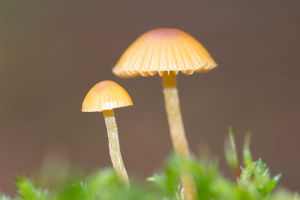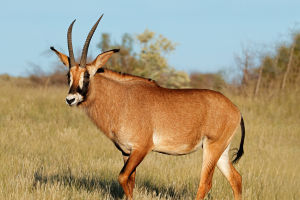Africa is home to many beautiful wild animals, stunning scenery, and all kinds of interesting things. The Baobab is the real representation of life in the African plains. This giant, strange looking tree grows in low-lying areas all over Africa, Madagascar, and Australia.
Baobab trees are the true giants of the African bush. Their distinctive silhouettes loom over the acacia scrubland, with Medusa-like branches spreading chaotically above a bulbous body. Baobabs may not be as tall as the coast redwoods of North America, but their vast bulk makes them a strong contender for the world's largest tree.
The baobab tree is one of the most useful trees in the world. Every part of it is astounding in its properties and benefits – from its young leaves and seeds to its ancient hollowed out trunk. Read on to discover 5 stunning facts about these remarkable trees!
1. The Baobab Tree is also known as the Tree of Life
This massive tree is also known as the tree of life, because it has many useful properties. It acts like a huge succulent and its trunk is packed with up to 80% water. San Bushmen used to rely on these trees for water when the rivers started to run dry and when there was no rain. One baobab tree contains 4,500 liters (or 1,189 gallons) of water. The center of the tree can also give people shelter. The bark and inner parts of the tree is soft, fibrous, and resistant to fire. It can be used to weave clothes and rope. Other parts of the baobab can also be used to make rubber, soap, and glue. The leaves and part of the bark is used in traditional medicine. It’s also a source of life for African wildlife. It provides food and shelter for a variety of species, from the tiniest insects to some of the biggest animals in Africa like the elephant.
2. Baobab trees are among the longest-lived trees
Baobab trees can live to become thousands of years old. The oldest baobab tree on record was the Panke baobab in Zimbabwe which lived to be a venerable 2450 years old. Baobab trees only have very faint growth rings. So, carbon-14 dating is used to determine their age, which is very appropriate for these ancient living fossils.
3. Baobab seed oil for skin and hair beauty
The oil pressed from baobab tree seeds has long been a favoured ingredient in natural skincare and hair care products. Baobab seed oil is intensely moisturising and contains linoleic, linolenic and omega-3 fatty acids which help soothe dry and irritated skin5. Baobab seed oil is also naturally insect-repelling!
4. It has a Nutritious Super Fruit
The baobab tree has a unique fruit that resembles an oblong velvet covered gourd. The fruit has big black seeds and it has a slightly powdery tart pulp in the center. There are a lot of health benefits that you can gain from eating the fruit and leaves. The young leaves can be an alternative to spinach, while the pulp of the fruit can be soaked and blended into a drink. The baobab fruit is a super fruit thanks to its high levels of potassium, iron, vitamin C and calcium. According to some reports, the pulp has ten times the amount of vitamin C as oranges. It’s recommended for weight loss, skin elasticity, and contains 50% more calcium that spinach. It can also help the health of your cardiovascular system.
5. Baobab trees are crucial parts of the ecosystem
Baobab trees play a huge role in the ecosystem of the dry African savannas. Firstly, they help to keep the soil humid, slow soil erosion and recycle essential nutrients. Secondly, hundreds of animals find food, water and shelter in baobab trees. Elephants eat the bark for moisture when there is no water nearby. They also eat the fruit and help the baobab tree with seed dispersal in return.


